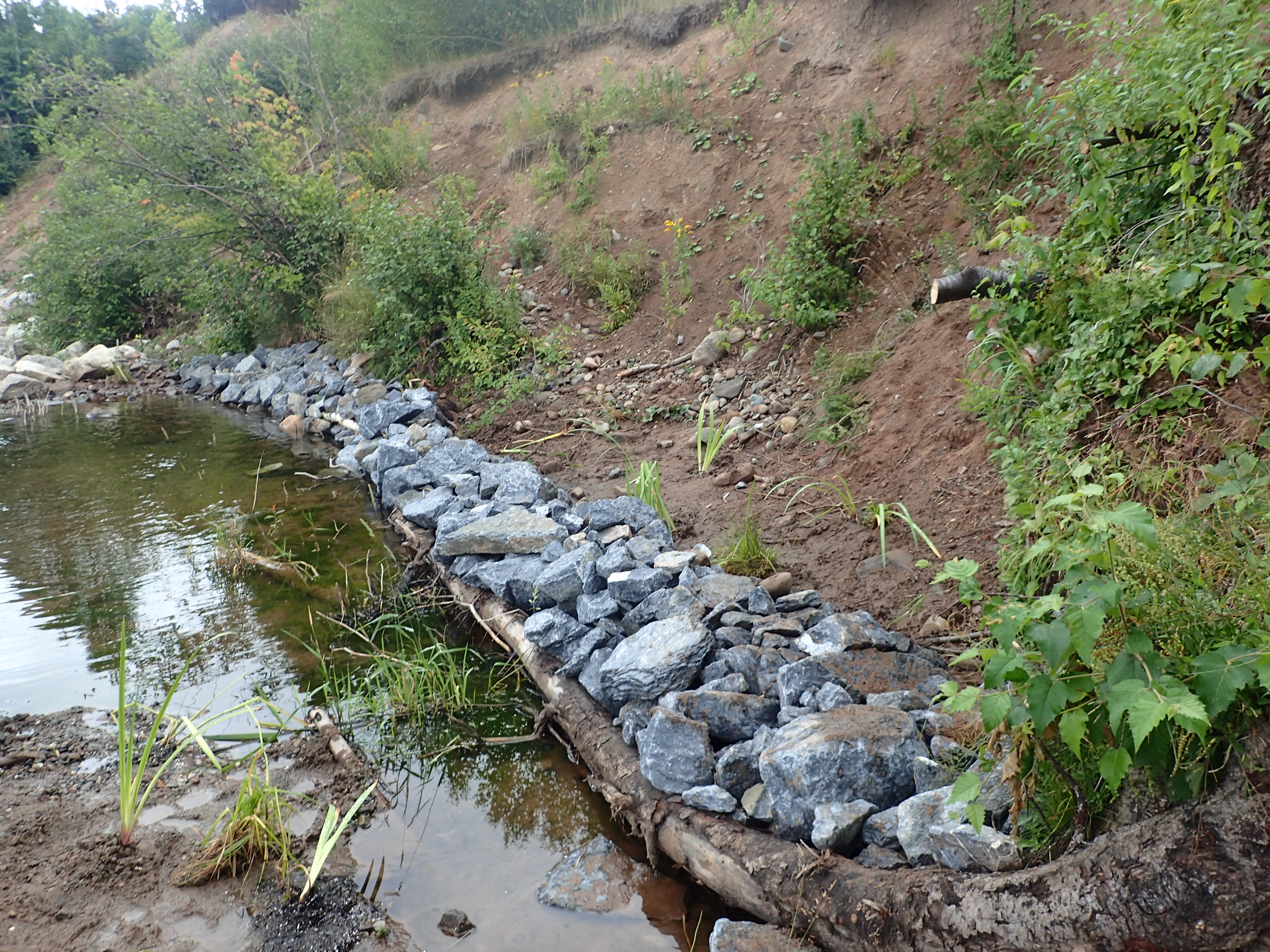Humber Arm Environmental Association Inc.
September 11, 2018Everyone knows that before you can build anything you need a strong foundation.
The latest ASCF funded project undertaken by the Humber Arm Environmental Association is making sure that is the case in the Humber River Watershed. It involved assessing and restoring streambank stability.
With the help of $8,050 in grant funding from the ASCF in 2017, along with some guidance from a committee of expert advisors, the Humber Arm Environmental Association restored habitat for Atlantic salmon and other fish species by placing rock rip rap and planting native vegetation along eroding streambanks to reduce bank erosion and sedimentation along South Brook, Pasadena, Newfoundland.
Sedimentation interferes with the habitat of fish species by increasing the number of particles in the water. These particles, otherwise known as silt, settle to the bottom of the river and fill small spaces between rocks on the stream bed therefore decreasing spawning grounds for multiple fish species, including Atlantic salmon.
Before they began their restoration work, the group surveyed 50 kilometres across eight rivers throughout western Newfoundland to assess and document areas susceptible to erosion. This information was used to identify and prioritize 47 areas in need of restoration work. Sites for restoration work were prioritized based on the severity of erosion along the streambank, known fish species found in the area, and knowledge of previous restoration efforts in the streams. Each waterway was mapped to show their visual assessment for later use.
Over the summer of 2017, Humber Arm Environmental Association restored and stabilized 1600m2 of riparian habitat and planted 159 shrubs, grasses and trees. Water quality parameters (water temperature, dissolved oxygen, specific conductivity, total dissolved solids, salinity and pH) were monitored pre-restoration, restoration, and post-restoration qualities of the area to ensure downstream river habitat was not compromised by the restoration work upstream.
The overall objective of the project was twofold – to improve habitat for Atlantic salmon and prioritize stabilization projects for future years.
Salmon and other recreational freshwater fisheries are an important part of the culture of western Newfoundland, and a significant contributor to the tourism and guiding industry.

